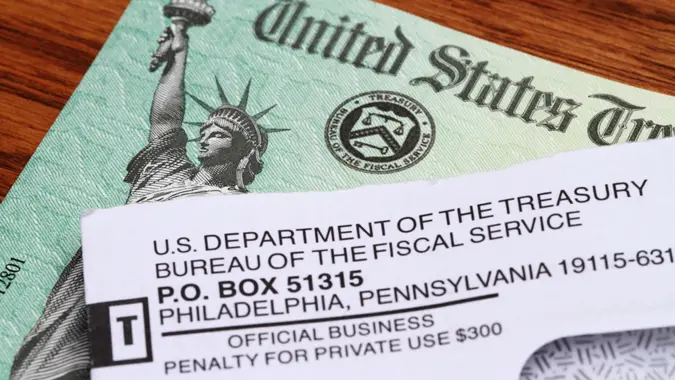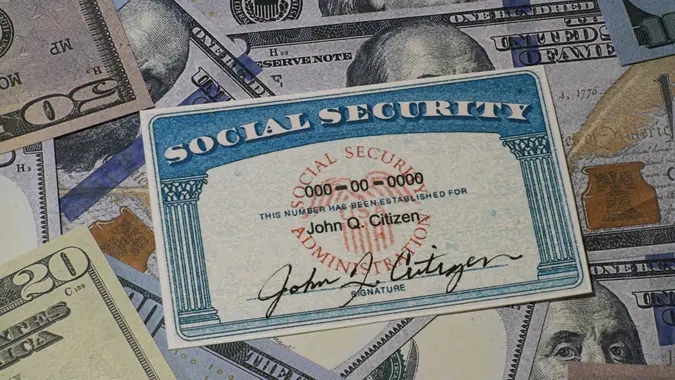‘Rich Dad’ Robert Kiyosaki Says Social Security Is a ‘Legal Ponzi Scheme’ — Do Experts Agree?

Commitment to Our Readers
GOBankingRates' editorial team is committed to bringing you unbiased reviews and information. We use data-driven methodologies to evaluate financial products and services - our reviews and ratings are not influenced by advertisers. You can read more about our editorial guidelines and our products and services review methodology.

20 Years
Helping You Live Richer

Reviewed
by Experts

Trusted by
Millions of Readers
Robert Kiyosaki is a well-known personal finance guru, famous for being the author of “Rich Dad Poor Dad.” In a recent blog post, Kiyosaki discussed the dangers of Ponzi schemes and how to protect your investments from fraud.
One of the Ponzi schemes Kiyosaki discussed was Social Security. Is there truth in this statement? Take a closer look at Kiyosaki’s interesting take on Social Security as a legal Ponzi scheme, including why some experts agree.
What Is a Ponzi Scheme?
The phrase Ponzi scheme dates back well before Bernie Madoff defrauded investors out of $65 billion. Between 1882 and 1949, Charles Ponzi, an Italian immigrant, found a loophole in currency exchanges. He promised investors double returns by buying coupons overseas and cashing them in within the United States.
Since there were not enough coupons to support the investments he was receiving, Ponzi began paying off early investors with funds from new investments. This is the basic principle of a Ponzi scheme: using one person’s money to repay another.
How Does Social Security Compare To a Ponzi Scheme?
Social Security follows the basic principles of a Ponzi scheme, taking money from one person to give to the next. Wages from the working class are subject to Social Security taxes. These taxes are then funneled to older generations to supplement their retirements. Unlike Bernie Madoff and Charles Ponzi, Social Security is a legal program in the United States.
Most Ponzi schemes are not foolproof, with the curtain eventually being pulled back. The same situation appears to be unfolding with Social Security. The Social Security Administration predicts that the trust fund will be depleted by 2035. This means that younger generations who are actively paying into Social Security may not receive full benefits — however, they would likely receive some benefits as people will continue to pay into Social Security to fund that.
What Do Others Say?
Brian Seelinger, an attorney at Knox McLaughlin Gornall & Sennett, P.C., agrees with Kiyosaki: “Social Security Insurance was designed to provide subsistence level support for the aged. However, it morphed into the definition of a Ponzi scheme due to changes in society, lifespans and financial structures.”
Seelinger continued, “In 1940, the life expectancy was approximately 61 1/2 years for men and 65 1/2 years for women. This established the average age of death as below the 65 years of age required to claim SSI. It was not designed as a retirement fund but as a program to keep the elderly out of poor houses. As these payments became more ubiquitous, people began to plan on this income as a form of retirement income rather than the last resort of the destitute.”
More From GOBankingRates
 Written by
Written by  Edited by
Edited by 

























